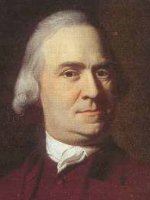“Commitments to equality and democracy and an aversion to aristocratic rule”
The article states:
According to legend, the Revolutionary War started suddenly, when an aggressive and conceited British regime based in Boston sent soldiers to seize arms stored in Concord. In response, roughhewn American farmers heeded the call to defend their homes and hearths from British tyranny. Miraculously, the underdogs succeeded. The tenacity and will of virile American farmers, it turned out, could vanquish a well-trained army of British Regulars, foreshadowing the ultimate success of the American Revolution as a monumental event in world history.The redcoats’ overwhelming attack on the Lexington militia companies has been a vital part of the story from the beginning, never denied by “mythology.” Patriot propagandists even played up that violence, insisting the British attack was unprovoked.
This mythology, however, is inaccurate. In reality, the Americans were initially overwhelmed by extensive British forces at Lexington.
In the 1800s local chroniclers added some face-saving details of counterattacks, like some of the Lexington company firing back and Capt. John Parker leading his men to ambush the British as they came back into town in the afternoon. But no one ever claimed that Lexington was where American farmers “succeeded” in stopping the regulars.
Zelnik’s command of detail goes down from there:
But the larger force of fighters that engaged the Redcoats further along the road in the Battle of Concord led the British to retreat to Boston, so as not to be stranded so far from reinforcements.The British plan was always to search Concord and then return as quickly as possible, meeting reinforcements on the way. The exchange of fire at Concord’s North Bridge alarmed the British commanders, but it didn’t really hurry them.
It was on the road back to Boston — not in Lexington and Concord — where most of the fighting took place, and that counterassault was largely led not by militia members, but rather by minutemen. These highly trained units, composed of thousands of the region’s hardiest gun-owning fighters, were accustomed to irregular guerilla warfare. During the Seven Years’ War (1754-63) many New Englanders had served in provincial regiments that proved crucial for turning the tide of war in favor of the British.The minute companies were part of the militia system. Generally those men had more equipment and training than average, but how much more varied from town to town. Zelnik implies the minutemen were drawn from veterans of the war that had ended twelve years before. In fact, they were usually the younger militia members, less likely to have seen combat. (And few British officers in the Seven Years’ War would have agreed that the provincial troops were their crucial edge.)
Moreover, since the British had sent several expeditions into rural Massachusetts over previous months that turned out to be dry runs for April 19, the minutemen were already drilled and ready when the actual fighting began.The minute companies started to form in the fall of 1774. There was only one British expedition after that season—to Marblehead and Salem, large coastal towns, in February 1775. The regulars also made a handful of practice marches that provoked militia alarms, but those went no farther than two towns outside of Boston. Few of the militiamen who marched on 19 April had seen redcoats in any numbers.
These misconceptions are a shame because Zelnik’s hypothesis is sound: “more than any other moment in the nation’s collective memory of the war, the myth of Lexington and Concord has for generations represented commitments to equality and democracy and an aversion to aristocratic rule.”
Furthermore, he’s right in warning that that national myth’s “commitments to equality and democracy” have at many times been hijacked by people who want “equality and democracy” only for part of American society—which isn’t equality and democracy at all.






